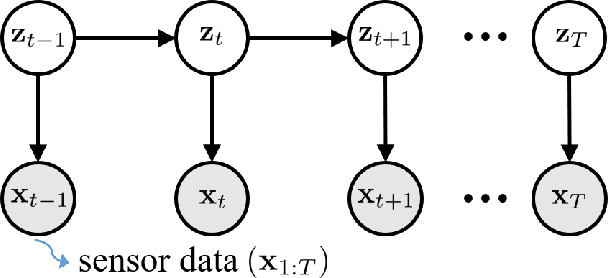Physics-guided Deep Markov Models for Learning Nonlinear Dynamical Systems with Uncertainty
Paper and Code
Oct 16, 2021



In this paper, we propose a probabilistic physics-guided framework, termed Physics-guided Deep Markov Model (PgDMM). The framework is especially targeted to the inference of the characteristics and latent structure of nonlinear dynamical systems from measurement data, where it is typically intractable to perform exact inference of latent variables. A recently surfaced option pertains to leveraging variational inference to perform approximate inference. In such a scheme, transition and emission functions of the system are parameterized via feed-forward neural networks (deep generative models). However, due to the generalized and highly versatile formulation of neural network functions, the learned latent space is often prone to lack physical interpretation and structured representation. To address this, we bridge physics-based state space models with Deep Markov Models, thus delivering a hybrid modeling framework for unsupervised learning and identification for nonlinear dynamical systems. Specifically, the transition process can be modeled as a physics-based model enhanced with an additive neural network component, which aims to learn the discrepancy between the physics-based model and the actual dynamical system being monitored. The proposed framework takes advantage of the expressive power of deep learning, while retaining the driving physics of the dynamical system by imposing physics-driven restrictions on the side of the latent space. We demonstrate the benefits of such a fusion in terms of achieving improved performance on illustrative simulation examples and experimental case studies of nonlinear systems. Our results indicate that the physics-based models involved in the employed transition and emission functions essentially enforce a more structured and physically interpretable latent space, which is essential to generalization and prediction capabilities.
 Add to Chrome
Add to Chrome Add to Firefox
Add to Firefox Add to Edge
Add to Edge